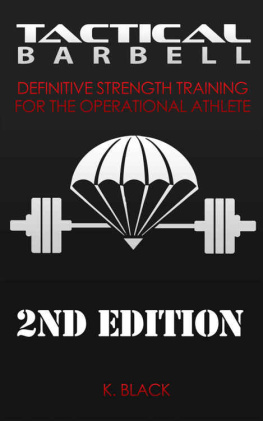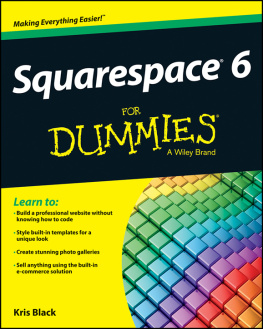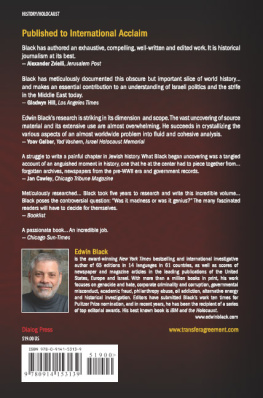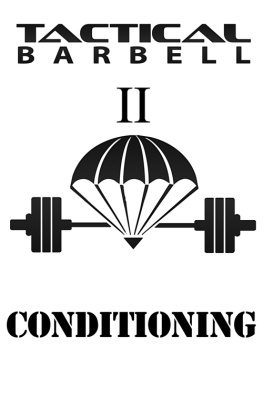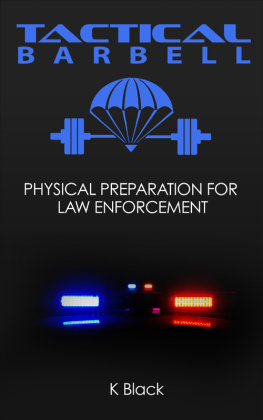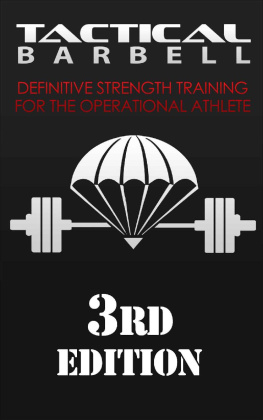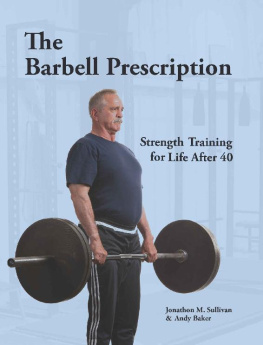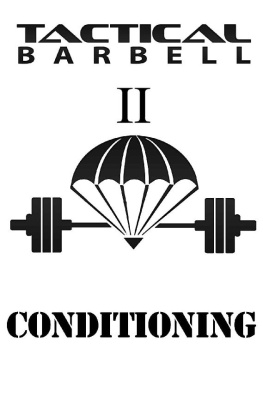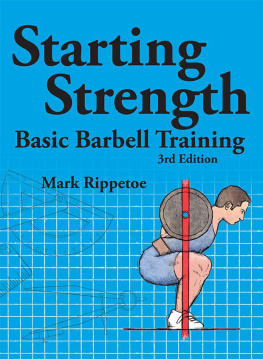ISBN: 978-1-4835523-8-5
CONTENTS
Consult a physician prior to beginning this program or any new fitness regimen
Congratulations on saving years of wasted time and effort in achieving your strength goals. To borrow an overused cliche, this is truly the program I wish I had when I started on the path to tactical fitness.
This book is for the man or woman who wants raw useable strength and durability WITHOUT sacrificing athletic ability. This book is for you if want a program with measurable results that doesnt require you to spend hours under the barbell to the detriment of your other physical attributes. I designed this book to provide military, SWAT, and emergency service personnel with a definitive barbell program to incorporate into training. Due to time demands and the variety of skills required, a tactical operator cant train like a powerlifter, and cant be sore for a week recovering from leg day. But at the same time maximum strength is a major requirement that cant be ignored. Tactical athletes have to become experts at everything, which can be quite a juggling act. This book will deal with giving you the piece that is strength, in a way that doesnt force you to specialize and neglect your other skills.
Although this book is primarily aimed at those in the operational arena, its also for the general training enthusiast, athlete, fitness fanatic or weekend warrior that wants a hard, muscular physique that delivers real world strength. Athletes or those preparing for an event will find a strength program that can be used annually or seasonally in blocks, depending on the sport/event.
A SWAT operator may have to breach a fortified drug house, run behind a police dog for long distances, and wrestle with bad guys, all while wearing heavy body armor and carrying cumbersome gear. Infantry soldiers have to patrol dozens of miles into an area carrying 80lbs of kit or more, and then conduct gruelling house to house combat. All while sleep deprived and fatigued. We all know how physical a firefighters job can be at times.
This book is NOT a cookie cutter program. There are simple, yet definitive sets of pieces that you can move around and incorporate within your lifestyle and current training. Many tactical types train a martial art or sport on the side. More to juggle. The right strength program can boost your results in those areas. The wrong type can take away from your performance and eat up your time.
Ive included several step by step templates to choose from, that take into account the amount of time you can allot to strength development, in relation to your other training requirements and lifestyle.
This program came about through my own experiences and requirements. Ive spent almost twenty years in the military and federal law enforcement. During my career Ive spent a considerable amount of time in physically demanding units, as an infantryman, paratrooper, and later as a Hostage Rescue Team member for federal law enforcement. At the start of my journey into the tactical world, I was 150lbs and practically a teenager. I wasnt particularly strong, but I was motivated to excel in my field, mostly out of necessity. In those days, fitness and strength were an absolute job requirement in certain military units. As you can guess, my interest in peak physical fitness started at this time. I wanted to increase my strength, and I needed to increase my strength in order to perform.
During my time in the military, I was exposed to exercises and operations involving sleep deprivation, overexposure to the elements, hours of ruck marching with loads that weighed 50-100lbs plus, attack maneuvers during the day, digging trenches and setting up defensive perimeters all night. Anybody thats spent time in an infantry, spec ops, or combat arms unit will know exactly what Im talking about here and may be nodding (or shuddering) in recognition.
Cardiovascular fitness was vital, but as you can see, functional strength was a key requirement as well. The military did a great job of keeping our cardiovascular system primed during regular unit PT, but they didnt spend much time if at all on strength training. The closest we got was high repetition push-ups, pull-ups, and carrying around heavy logs. These are great exercises and have their place, but for developing maximal strength they are pretty limited in my experience. I always saw military PT as being more about developing the will to keep going versus training or improving actual physical skills. Curious thing, even though I did lots of push-ups and pull-ups daily in the military, my total numbers in those exercises stayed relatively the same. After I started proper functional strength training, my numbers shot up considerably even though I was not training any extra high repetition push-ups or pull-ups.
In the beginning I made a lot of mistakes. I got into the typical bodybuilder style of training. I got a little bigger and looked more muscular, but I wasnt really getting much stronger. Not only that, constantly being sore made my other duties, and training suffer. Morning PT with the military started to become painful. My new muscles had a bit of a puffy look to them as well. It started to dawn on me that bodybuilding wasnt making me much stronger in real life. Not only that, it was beginning to hinder me during military exercises or operations in the field. And if I wasnt pumped in the gym, my muscles stopped looking all that impressive. I had peaked with a bench press of about 185lbs. Not very impressive at all. I was stuck and couldnt seem to lift heavier. Of course, there were days where I felt great and energized and Id lift a few pounds more than usual, but then Id drop back down to what seemed like my baseline eventually. And vice versa. Other days when I was fatigued I wouldnt be able to lift as heavy. This occurred with all my lifts in the gym. I saw others that were my size lifting far heavier than me, so I couldnt accept that I was reaching my limits.
There was an extremely fit special operations soldier that would train at the base gym once in a while. He was a serious individual, and didnt spend a whole lot of time socializing during his workout. He looked impressive. He was muscular and ripped in the way that fighters or boxers are, as opposed to bodybuilders. He had a dense hard look to him, and he did things in the gym that appeared superhuman, even to the other soldiers. I noticed a few interesting things about his weight workouts. He would lift extremely heavy. His sets consisted of low repetitions, and he would always rack the barbell before reaching failure. He looked relaxed and almost surgical during his weight training. I never once saw him use cables, medicine balls, or anything like that. Nor did I see him perform isolation exercises like bicep curls or calf raises. His workouts seemed very basic, squats, bench press, deadlifts. I was curious as to how he could lift as much as he did, be as muscular as he was, and perform functionally the way I knew special operations soldiers had to. He advised me to look into something called periodization and progressive strength training. He told me there was a major difference between bodybuilding and developing strength. At the time those concepts werent well known in my circles and it sounded pretty far-fetched to me. I mistakenly and ignorantly wrote his success off to genetics in my mind.




